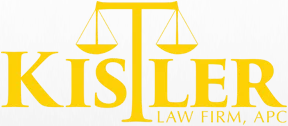How to Prove Fault in Trucking Accidents

Determining fault in trucking accidents involves navigating complex layers of evidence and understanding the interplay of various factors that contribute to these serious incidents. Proving negligence is critical to securing fair compensation for victims of truck accidents. Read on for a discussion on proving fault in trucking accidents, and contact the Kistler Law Firm for help after a trucking accident injury in Palmdale, Lancaster, or the Antelope Valley.
Basics of Negligence in Trucking Accidents
Negligence in trucking accidents refers to the failure to act with the care expected of a reasonable person, which results in an accident and subsequent injuries. To establish negligence, one must prove four key elements: the truck driver had a legal responsibility to operate the vehicle safely, the truck driver failed to fulfill their duty through reckless or careless actions, the breach of duty directly caused the accident, and the accident resulted in measurable harm to the victim.
Evidence Collection
Proper evidence collection is foundational in proving fault. Essential items to gather include accident scene photographs and videos, truck driver’s log books, vehicle maintenance records, data from electronic control modules and dashcam footage, and witness statements. Each type of evidence plays a crucial role in painting a comprehensive picture of the events leading up to and during the accident.
Expert Testimonies
Experts play a vital role in interpreting evidence and establishing fault in trucking accidents. Accident reconstruction specialists analyze crash data and recreate the accident to explain how and why it occurred. Mechanical engineers can testify whether a truck’s mechanical failure contributed to the accident. Medical professionals correlate injuries directly to the crash, highlighting the impact and need for compensation. Safety compliance experts offer insights into whether the trucking company or driver violated state or federal safety regulations.
Legal Challenges and Considerations
Proving fault in trucking accidents is fraught with legal challenges, such as the involvement of multiple liable parties, including the driver, trucking company, cargo loaders, and maintenance providers. The trucking industry is also governed by extensive federal and state regulations, which must be understood thoroughly in order to argue negligence effectively. Additionally, the severe damages typically involved in truck accidents mean that the stakes are high, often leading insurance companies and defense teams to dispute claims aggressively.
Strategies for Proving Fault
To effectively prove fault, one must undertake an immediate investigation to preserve evidence, utilize modern technology like 3D scanning and simulation software to help jurors visualize the accident scene, and stay updated on laws and regulations that govern trucking and can provide additional leverage in proving negligence.
Contact Kistler Law Firm After a Serious Antelope Valley Trucking Accident
Proving fault in trucking accidents requires a thorough understanding of legal principles, diligent evidence collection, and the strategic use of expert testimonies. For victims, navigating this complex process is challenging without legal expertise. Partnering with a skilled personal injury lawyer who understands the intricacies of truck accident cases is crucial.
At Kistler Law Firm, we devote our full attention to truck accident claims and are committed to helping our clients gather the necessary evidence and expert support to establish fault and secure the compensation they deserve. If you’ve been involved in a trucking accident in Palmdale, Lancaster, or the Antelope Valley, contact us for a no-cost consultation, and let us guide you through the legal process.

